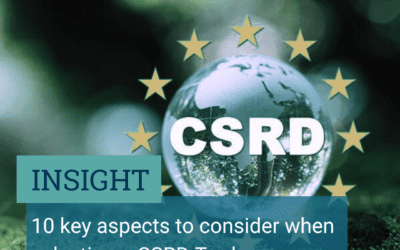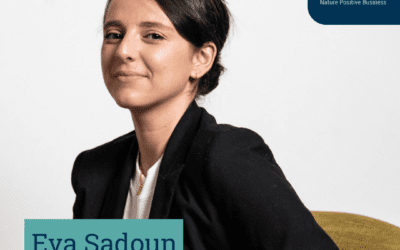
The textile and clothing sector is a $2.4 trillion industry that employs 300 million people worldwide. Without change, the fashion industry will account for 26% of the world’s carbon emissions by 2050 (Ellen McArthur Foundation).
In 2020, textile was among the top sectors with environmental and climate change impacts on a Life Cycle Assessment basis. Some key facts include:
- Generates GHG emissions of 121 MTCO2eq annually, around 270 kg CO2eq per person.
- Responsible for 2-8% of the world’s GHG emissions.
- Responsible for 20% of the world’s wastewater.
- $100 billion lost due to under-utilization and lack of recycling.
- 85% of all textiles go to the dump each year, the equivalent of one garbage truck per second.
- Responsible for 9% of annual microplastic losses to the ocean.
- About 80% of textiles’ total climate change impact occurs in the production phase.

On top of the environmental impact, the fashion industry also raises social concerns. On April 24, 2013, a garment factory in Bangladesh called Rana Plaza collapsed, leading to the death of more than 1,000 workers and injuries of another 2,500. It is sad to say that the complex and fragmented supply chain, which is the norm of the fashion industry, creates unsafe working conditions and fosters abuse.

Volunteers evacuating injured workers after the collapse. (Photo: AFP/Munir uz Zaman)
FAST FASHION, A SYMBOL OF OVERCONSUMPTION AND THE FIRST CHALLENGE TO TACKLE FOR THE INDUSTRY
Fast fashion has captured the attention of consumers globally, a business model characterized by quickly produced, affordable, and on-trend clothing. It offers consumers the ability to keep up with rapidly changing styles at relatively low prices. The rise of disposable fashion has contributed to a culture of overconsumption, where clothing items are treated as short-term, disposable commodities rather than long-lasting investments. Boosted by innovations in supply chain management and the widespread influence of social media, the fast fashion market is projected to reach $197.05 billion by 2028 at a compounded annual growth rate of 8.5% (Fast Fashion Global Market Report 2024). It is important to note that the leading cause of growth in the fast fashion industry is the expansion of the youth population. Data from United Nations projects the global youth population to grow by 7.9%, to 1.3 million by 2030.
It is also impossible to neglect the recent emergence of what Harvard Business Review calls Instant Fashion. The most well known brand representing this newly developed business model is SHEIN. By incorporating the combination of mobile commerce, artificial intelligence, live shopping, and real-time, real-cheap product creation, the company is able to reach $1.5 billion in sales six years ago, and has since multiplied by more than 20 times, with its revenue target for 2025 exceeding $50 billion. With SHEIN’s unsustainable business model, the manufacturers churn out the same amount of CO2 as approximately 180 coal-fired power plants, emitting about 6.3 million tons of CO2 a year (Synthetics Anonymous 2.0).

Lu, the University of Delaware professor, found that in a recent 12-month period, the Gap listed roughly 12,000 different items on its website, H&M had about 25,000, and Zara had some 35,000. SHEIN, in that period, had 1.3 million.
With the growing awareness of the negative impact the fast and instant fashion industry imposes, the EU has initiated to standardize Supply Chain Law which aims to reduce human rights violations and environmental malpractices in manufacturing locations. Marked by a strong and growing awareness among consumers regarding the environmental and ethical implications of their fashion choices, Europe seems to be swearing off fast fashion. According to Morgan Stanley research, the apparel industry is facing a structural decline as consumers cut back on the quantity purchased even with the drop in prices. More specifically, although the total market is increasing in value, the per capita consumption is plateauing. In fact, the world’s leading listed apparel retailers are experiencing earnings downgrade of, on average, 40% since the beginning of 2016.
On March 14th 2024, the French National Assembly adopted a legislation proposal aimed at reducing the negative impact of the fast fashion industry. The legislation aims to fight against fast fashion through multiple ways:
- establishing criteria to qualify fast fashion brands malus points that will augment the products’ price up to 50%,
- a ban on advertisement for fast fashion,
- the obligation to mention the negative impacts on e-commerce websites.
France is the first country to legally look into limiting the impact of fast fashion, leading the way to other countries to aim for more sustainable fashion.
This legislation was pushed by the past decade of changes across the fashion industry. Brands are increasingly rejecting fast fashion principles that emerged thirty years ago and prone cheap clothing with many collections. The concept of slow fashion was introduced by Kate Flecther and the center of Sustainable Fashion, calling for efforts to close the loop in fashion and promote sustainable models.
The Ellen MacArthur foundation established a vision for the fashion industry to introduce the circular economy concept in the way clothes are made and used. Fashion circularity means products to be used more, made to be made again, and made from safe and recycled or renewable inputs. The aim is to design items to prevent waste through designing them to be reusable, repairable, biodegradable and recyclable. It envisions the fashion industry as a closed loop in which materials are kept in use as long as possible.

Circularity should be the objective of fashion brands, and can be reached through putting in place a variety of models.
8 drivers of sustainability in fashion
After analysing tens of pioneers of sustainable practices in the fashion industry, we have outlined a list of models that fashion brands can put in place to reduce their environmental footprint.
Ethics & transparency
Ethics & transparency is the foundation of sustainable fashion. Brands should ensure that their materials and labor are obtained through fair and humane practices while allowing their customers to understand where and how products were made along the supply chain. Kotn is a great example of ethics and transparency, as illustrated through their “farm to clothes” slogan. They partner with Egyptian farms, which are transparently showcased on their website, as well as all the farming practices to ensure customers can follow where Kotn materials come from.
Another key aspect of sustainable fashion is to promote the longevity of clothing in order to prevent customers from buying more. This model relies on high quality garments to last longer. Brands can also put in place repair services to expand the lifespan of garments, repairing damaged clothes instead of wasting them. This practice can be used in-house such as Patagonia or outsourced with brands like Prolong that are dedicated to offering B2B repairing services.
Zero Waste Design
Zero waste design consists of designing patterns that use fabrics in the most efficient way possible to minimize cutting waste during the production process. For example, the British luxury brand Elvis & Kresse use waste from fire brigades’ hoses to make goods like bags, ensuring no material is wasted in the design process.
Upcycling
Upcycling is a big component of sustainable fashion and consists of turning waste materials or old products into new, higher quality items thus minimizing waste and reducing the demand for new raw materials. Upcycling continues the life of products, keeping them out of landfills and adding value to them. Upcycling differs from recycling in its process: recycling breaks down the material, this can be reformed into something new but the broken down fibers tend to be less good quality, it is often blended with virgin materials to strengthen it. This process is highly energy intensive and may be inefficient: PET plastic bottles can be recycled with little waste up to 10 times into bottles, the fashion industry buys these plastic bottles and sells clothes out of which 85% end up in the bin in the same year. They get certified by the Global Recycling Standard but in fact merely delay waste. On the other hand, upcycling simply reimagines products. For instance, the German brand Freitag builds highly resistant and high quality bags from up cycled materials like car seatbelts.
Fibre to fibre recycling
While recycling can be less efficient and more energy intensive, fiber to fiber recycling is an innovative process that involves breaking down used textiles into their original fiber form to create new textile products. This method relies on virgin materials such as linen and cotton. Fiber to fiber recycling involves several techniques such as chemical recycling, to reclaim fibers from old items, which are then spun into new threads. It is a more challenging process in the fast fashion industry, as most clothes are made from a mix of different materials, such as polycotton, but we will see that technological advances can solve this issue.
Renting
The rental model is more niche but highly efficient to ensure sustainability in fashion. Brands can offer clothing for limited periods of time, which works best for non frequently worn items like special occasions outfits. The most famous brand specialized in rental is Run the Runway, which offers different kinds of services, namely rental, purchase, and subscription.
Subscribing
Subscription models come next, offering rental subscriptions for clothing items. This model upholds slow fashion, reducing the number of yearly collections and reusing garments. For instance, MUD Jeans offers a 12-months subscription for a pair of jeans. Once the jeans are paid back, customers have the choice to send it back to the company for it to be recycled, or they can choose to keep it and start a new subscription.
Pre-ordering
Pre-ordering models take us back to centuries ago, when customers would order in advance one piece of clothing to be tailored for them. This model inspired from the past reduces waste, resource efficiency, and enhances demand forecasting. On-demand fashion is on the rise, with brands like Misha Nonoo offering pre-ordering as part of their services. This creates a closer link between customers and stylists, enhancing transparency and accountability.
Second hand
The second hand model is also very popular, fueled by trends like “old-school” and “pre-fashion”. This model extends the lifespan of products by reselling clothes, decreasing the demand for new clothing production. This model also promotes accessibility by offering designer and high-quality produce to a wider audience. Like the repair model, brands can either include second-hand within their strategy or outsource it through platforms like Reflaunt which enables brands and retailers to promote circular fashion through resale.
Dive into Regenerative Organic Certified by Patagonia
Patagonia’s Regenerative Organic Certified® (ROC) label is a pioneering initiative aimed at redefining sustainable agriculture. This certification emphasizes the holistic approach of regenerative organic agriculture, which promises to rehabilitate soil, respect animal welfare, and improve the lives of farmers. Through regenerative practices such as crop rotation, cover cropping, reduced tillage, and prohibiting synthetic inputs, the certification targets enhanced soil health and biodiversity. It also prioritizes animal welfare by advocating for grass-fed and pasture-raised livestock, prohibiting Concentrated Animal Feeding Operations (CAFOs), ensuring suitable shelter, and minimizing transport—all aligned with the “Five Freedoms” of animal welfare. Social fairness is equally important, emphasizing fair wages, safe working conditions, capacity building, and the right to organize for farmers and farmworkers.
The certification process involves a thorough evaluation including an initial application, submission of a Regenerative Organic System Plan, a review process, an on-site audit by an approved certifying body, and a commitment to continual improvement. Currently, over 2000 farmers are involved in Patagonia’s ROC programs for cotton and food, reflecting a significant adoption of these standards. Each brand under the ROC label must obtain a license for specific products and can add more products to this license. Importantly, while the entire supply chain does not need separate licenses, it must be disclosed through a Supply Chain Actor Disclosure Form, ensuring transparency and compliance with regenerative organic standards throughout. This initiative not only seeks to revolutionize the agricultural landscape but also strives to foster a more sustainable and equitable system for the future.

Examples of brands using sustainable models
These three cases exemplify different ways of using sustainable models in practice in order to reach circularity in the fashion industry. From ethics and transparency, to subscription, rental, and upcycling, brands have a variety of options to choose from and bring innovative solutions to the market. By setting themselves as pioneers of sustainable fashion models, brands can lead the way to a global circular fashion, away from fast fashion and all the environmental disasters it engenders.
Patagonia
Patagonia is well known for its sustainability and social responsibility commitments that are demonstrated in their innovative business model that donates profits to NGOs. The brand focuses on designing high-quality, durable, and recyclable products to reach circularity. With a clear emphasis on ethics and transparency, Patagonia seeks innovative ways to reduce its environmental footprint and support community engagement through initiatives like Patagonia Action Works.
Elvis & Kresse
Elvis & Kresse have established a niche for luxury from reclaimed materials, launching in 2005 with the vision of reusing and re-engineering waste into valuable luxury goods. Through upcycling, they add value to produce meant to be wasted by using them to manufacture their own products. The company has saved 300 tons of waste from landfills so far, notably rescuing decommissioned fire hoses. They donate 50% of their profits to charities, showcasing a commitment to social responsibility and ethics.
MUD JEANS
MUD Jeans is an example of innovative sustainable fashion, pioneering a circular economy model centred around recycling denim. Their Lease a Jeans scheme is highly innovative: they created a rental, subscription-based system which allows customers to lease jeans and recycle them at the end of the scheme. Furthermore, their “Road to 100” initiative commits to producing jeans entirely from post-consumer recycled cotton.
We had the opportunity to meet Patagonia’s CEO Ryan Gellert on our Reboot Podcast, who gave us valuable insights into such sustainable models. You can find it here.
Technology implementation in the fashion industry
While brands can put in place a variety of low-tech models to reach circularity, high-tech solutions also exist to boost the process of circularity.
For instance, the French startup Carbonfact designed a carbon management software specifically for textile and footwear companies. It automates the measurement, reporting, and reduction of carbon emissions across a product’s lifecycle. The platform cleans product data, fills data gaps with AI, calculates carbon footprints for each product item, and helps companies comply with regulations like the EU CSRD and the NY Fashion Act.
Reflaunt is a platform that uses technology to help brands engage in the circular fashion economy. They offer services that allow consumers to resell their pre-owned items through the brand’s own channels, helping brands with sustainability and customer loyalty. Reflaunt integrates with brand websites to enable a simple resale process that can be applied to any type of textile company, from outdoors apparel to luxury, but also resale marketplaces. Reflaunt overall enhances the lifespan and value of fashion items.
Prolong is a management platform focused on care and repair services for fashion items, aiming to streamline after-sales operations and enhance customer engagement. They help brands launch their repair services, connects them with a network of repair experts, and offer tools to integrate them into existing systems. The platform places a strong emphasis on increasing product lifespan and sustainability, turning traditional cost centres into profitable and loyalty-enhancing opportunities.
Another promising technological advancement relates to fibre to fibre recycling of mixed fabrics, such as polycotton. Eeden is a Dutch startup that uses chemistry to transform polycotton into cellulose and polyester back into its basic components. These materials are then upcycled into new, high-quality textile fibres like viscose. On a larger scale, the Australian company BlockTexx has been developing and testing their innovative technology called SOFT (Separation of Fibre Technology) to recycle clothing made from blends of polyester and cotton fibres. They are in a position to commercialise their solution and allow fashion brands to outsource their fibre to fibre recycling. Lastly, Supercircle is a reverse logistics platform specialised in managing trade-in programs, handling excess inventory, and providing detailed data reporting to ensure transparency and efficiency in recycling. They offer partnerships to retail brands to make it easier for them to achieve circularity.
Lastly, e-commerce can be unsustainably used, leading to huge negative environmental impacts, as is the case with Shein. E-commerce is often seen as the antithesis of sustainability but, with the right initiatives, it can be an enabler of important sustainability actions. Read more about it on our e-commerce article here.
From reducing the textile carbon footprint, to enabling the resale of pre-owned items, enhancing repair services, and recycling fibre to fibre high-tech solutions can empower brands to contribute to circularity in the fashion industry.
Despite being a significant global economic force, the fashion industry engenders considerable social and environmental challenges. There is an urgent need to change current trends that lead to big carbon footprints and substantial waste around the world. This urgency is highlighted by past disasters like the 2013 Rana Plaza collapse which exemplifies the terrible working conditions behind fast fashion.
At Impact Labs, we believe innovations in sustainable business models and technology solutions that promote circularity points towards a new horizon for the fashion industry, fostering more responsible consumption and production patterns. These shifts are crucial around the world, as increasing efforts are made to align with sustainability targets and ethical standards.

Amy Qian
Junior Consultant - Economic Impact of Sustainability

Emma Warter
Junior Sustainability Consultant
References
Chile’s desert dumping ground for fast fashion leftovers (2021), Al Jazeera
Fast, Cheap, and Out of Control: Inside Shein’s Sudden Rise (2022), Wired
Fast Fashion Global Market Report 2024, Research and Markets
Fast Fashion is Changing eCommerce in Europe (2024), eCommerceDB
Peak of Apparel Consumption (2019), Morgan Stanley
Shein Is the World’s Most Popular Fashion Brand—at a Huge Cost to Us All (2023), Time
The Lingering Cost of Instant Fashion (2024), Harvard Business Review
These facts show how unsustainable the fashion industry is (2020), World Economic Forum
Impact Labs CSRD Offer
We are happy to introduce our tailored CSRD service offer, designed to simplify compliance with the new regulations and drive impactful sustainability strategies. This way, teams can focus on reducing their footprint and developing effective nature strategies.
We streamline the CSRD reporting process with relevant tech and tools to make it as smooth and efficient as possible. Our service is designed to guide you through every step of this transformative journey.
Checklist on 10 key aspects to consider when selecting a CSRD Tool
Selecting the right technology for implementing the Corporate Sustainability Reporting Directive (CSRD) involves several key considerations to ensure compliance, efficiency, and effectiveness.
#REBOOT Business 12 – Une Economie Plus Juste
EPISODE SUMMARYAu fil des podcasts Reboot se dessine une ligne convergente vers l’urgence impérieuse de changer le système dans sa globalité. C’est...






